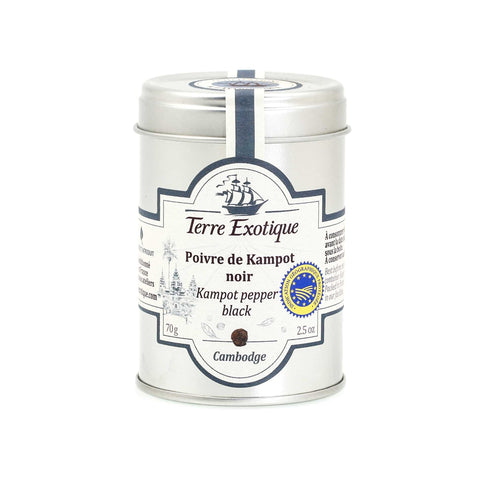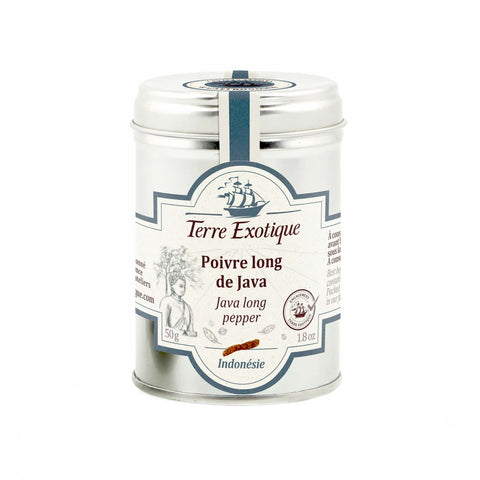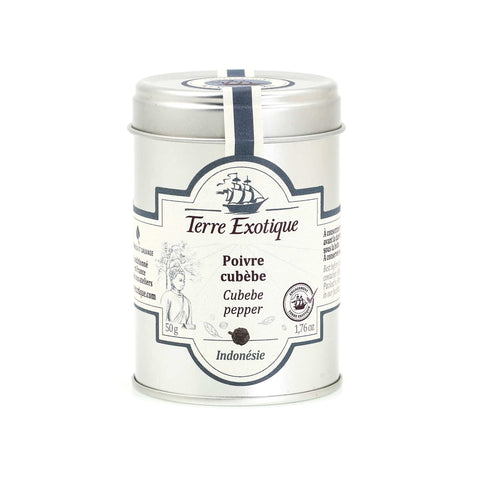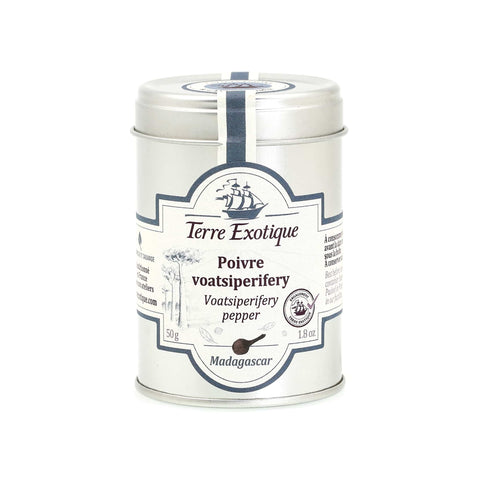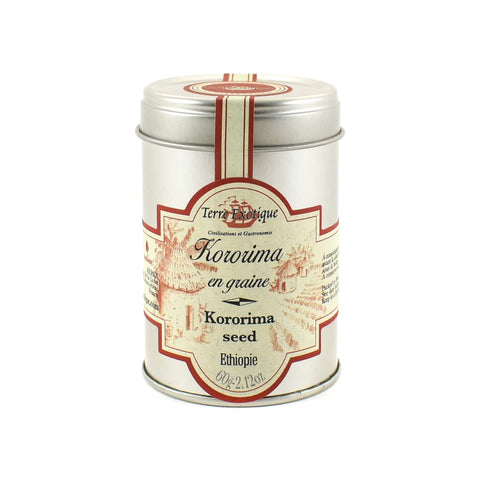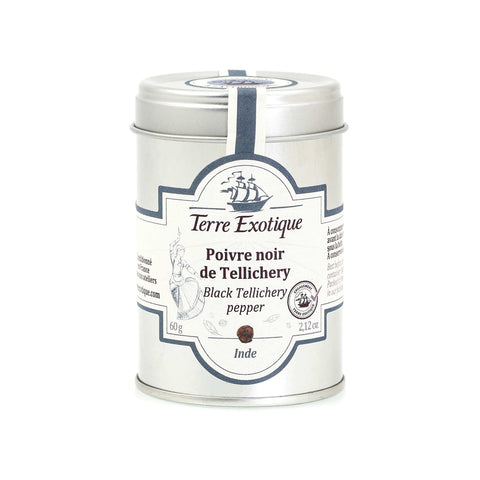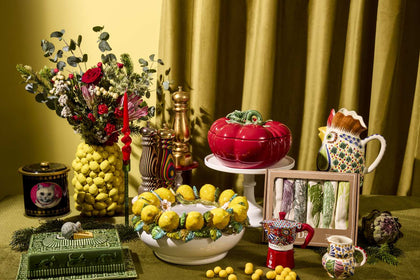The Ultimate Guide To Peppers From Around the World

Say “pepper” and people think of the plain old piper nigrum. But our range of peppers introduces you to just a few of the black pepper’s relations– namely cubeb pepper, long pepper and grains of paradise – all common hundreds of years ago, but somewhat neglected now, as well as lots of different peppercorns from round the world.
What is your pepper personality? Take our pepper quiz now to discover your perfect pepper >
It’s widely-accepted that a Chardonnay grown in Burgundy is very different to a Chardonnay grown in Australia. But little attention is paid to ‘terroir’ when it comes to pepper. It’s often used as a finishing flavour – the first flavour that a diner encounters.
Which makes pepper an important part of a dish. So we decided to investigate the different peppers’ aroma and flavour, and how they could best be paired with different ingredients.
–––
Introduction
We ground the peppers in a pestle and mortar to ensure the freshest flavours. And we tasted the peppers with a spoonful of rice – firstly to provide a neutral base (nobody wants to eat just pepper!) and also because the warmth of the rice ensured that the pepper released its aromas in the same way that it would if used to season a hot dish.

The biggest revelation was the lack of correlation between what aromas could be detected on the nose, and what flavours were detected in the mouth. Both in terms of intensity, and also in terms of flavour. Black Sarawak pepper, for example has big aromas – but is comparatively mild in the mouth. And while cubeb has a deceptively sweet-spicy nose, it has a bitter-eucalyptus taste.
Our tasting notes are all written below – but the best way to learn more about the difference between different peppers is to conduct a test yourself.
One pool of thought suggests that European settlers introduced black pepper to Malaysia in the seventeenth century. Another is that it was brought over by Chinese trader Zheng He, two hundred years earlier. Either way, the Malaysian climate is perfect for pepper cultivation – particularly the state of Sarawak, in mountainous Borneo, where 95% of Malaysia’s world-famous peppercorns are produced.
Nose: Big and rounded. Wet wood notes, with noticeable citrus fruit aromas.
Palate: Much milder in the mouth than on the nose. Old spice flavours, with a balanced woodiness.
Recipe ideas: Great finishing flavours for grilled meat. The big nose also makes this a strong enough pepper to hold its own in heavily-spiced dishes, like a curry or tagine.
Pepper has been grown between the Dâmrei Mountains and Cambodian coastline since the 13th century. But Cambodia’s civil war and military insurgency had a devastating influence on the country’s pepper production. Now the industry is back up on its feet, the area has become famed for its pepper once again – and is widely considered to be the best in the world.
Nose: Green and fresh aromas with a hint of lime blossom.
Palate: Delicate and light flavours, with a cold-spiciness which can be felt in the mouth.
Recipe ideas: This is the traditional pepper used for Kampot Crab. The lime blossom notes work particularly well with seafood or beef cooked with lime – the perfect antidote to a heavy black pepper.
This distinctive-looking pepper has a similar shape and size to a catkin. It can be broken down quite easily in a grinder, cracked in a pestle and mortar – or added whole to sauces and syrups to infuse its strong flavour.
Nose: Dry and dusty wood notes, with old spice aromas.
Palate: Camphoraceous, eucalyptus notes, with mouth flavours as big and strong as the nose.
Recipe ideas: This is no delicate seasoning, but it can be mellowed – either by cooking in a stew, tagine or curry – or simply by toasting in a dry pan before grinding. It’s often the pepper of choice in sweet recipes, for poaching pears or even making ‘long pepper cream’.
Cubeb was traded by Arab merchants as far back as the 7th century, though most cubeb pepper is now grown on tropical vines in Indonesia – near Java and Sumatra. It’s a big, bold pepper with a very different nose to palate – so don’t be fooled by the sweet smells. This is one to cook with, rather than to sprinkle generously as a finishing flavour.
Nose: All-spice, nutmeg notes. Reminiscent of sweet ginger biscuits.
Palate: Big, heady eucalyptus flavours. A cold spiciness, and long finish.
Recipe ideas: The bitterness cuts through rich and fatty flavours. Perfect for a lamb tagine or pork belly, and an interesting seasoning for game.
This rare pepper is grown in the hot and humid Madagascan rainforest on vines which can reach 20m, making picking very difficult! It’s worth the effort though – this is one of our favourites at Sous Chef.
Nose: Strong nose. Resinous aromas, and pine forest notes.
Palate: Medium heat, with light, lemon zest flavours.
Recipe ideas: The lemon zest flavours really lifts a dish, making this a versatile pepper, perfect for anything from roast chicken to beef, and even sweets like chocolate truffles or poached fruit.
Visually and texturally this spice is different to the other peppers. It doesn’t grind as easily, meaning that a bit of elbow grease is involved – and even then, it’s still coarser. The grains of paradise are also a white-lilac-grey colour, different to the other peppers’ uniform brown colours. Grains of Paradise’s popularity peaked in Medieval France, but it’s experiencing something of a comeback. Though once used as a cheap substitute, its rareness has now made grains of paradise more of a haute choice than the common piper nigrum – and it has also enjoyed fame as one of the botanicals in Bombay Sapphire gin.
Nose: Light, coconut notes. Clean and delicate nose.
Palate: Coconut, cardamom flavours in the mouth too. Distinctive, blossom sweetness. A complex pepper.
Recipe ideas: Use as a dry meat rub. It makes a particularly interesting crust for tuna steak, when other black peppers might overwhelm. Also use to flavour home-infused gins.
Indian Peppers
It’s thought that peppers are native to the Malabar coast of India – round the Western Ghats of Kerala. The climate and the soil is perfect for growing peppers, and the area is still renowned for both quality and quantity of peppercorn growth. Indian peppercorns first arrived in Europe in 1498 when Portuguese explorer Vasco de Gama landed on the south west coast of India, and started importing boatloads of ‘black gold’. Although both Tellicherry and Malabar peppercorns are grown in the same region they’re very different. The test between Tellicherry and Malabar demonstrates how peppercorns are as susceptible to change as grapes in small wine growing regions are.
Nose: Swedish sauna, big eucalyptus flavours. Grapefruit zest bitterness.
Palate: Big, rounded flavours – with similar intensity in the mouth as on the nose and a long, lingering finish.
Recipe ideas: Like Malabar peppercorns, Tellicherry is a versatile pepper, great for cooking with and also for using as a finishing flavour. Use to season everything from red meat to Malabar chicken curry. We even used it to flavour our Burn’s Night haggis.
If you've tried any of the peppercorns listed above, and you have tasting notes of your own, then please pop them in the comment box below.
That way we can build up an even bigger resource on all these beautiful peppers, their different aromas and different flavours.
